The Great Wall of China:
Initial construction of the wall in the Northern frontier is believed to have started in 221 BC. Though major construction and fortification took place in 13th century, during the Ming Dynasty. The wall offered protection against the attacks from ‘Tartars’.
The actual section of the wall is around 6500 kms long; the construction went on for almost 1800 years. Most of the parts of the wall are not restored, barring the sections close to Beijing. In the North, the ruins extend from Gobi desert into Mongolia, Russia and North Korea, before ending into the Yellow Sea.
 It is difficult to imagine even now that something of this magnitude could be achieved in those days!
It is difficult to imagine even now that something of this magnitude could be achieved in those days!
The wall and the towers were constructed using stones, bricks and mud. Tower serves as a pass and an observatory. Some Sections of the walls have cubicles designed to park horses. Shapes of watch towers vary depending on the sections of walls, the era of construction/fortification. Most of the watch towers are rectangular, but the towers found in Huangyaguan are round in shape.
Hiking on the Great Wall:
The Great Wall of China is a paradise for trekkers! It offers once in a lifetime experience to hike up the ruins of the largest structure ever built! As put forward by National Geographic Adventure, Great wall of China is one of the most under-appreciated backpacking venues!
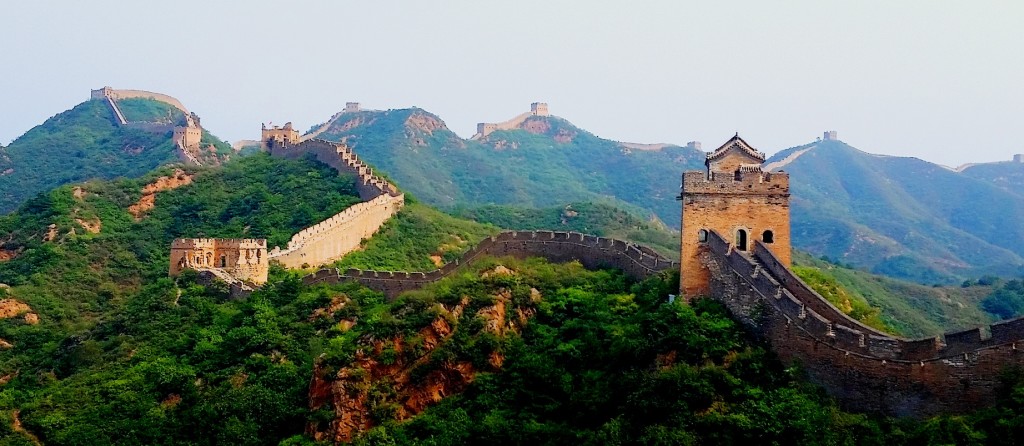
Hiking on the Great Wall requires strength and stamina. It tests your endurance with exhausting ascents and steep descents all along. The wall is notoriously steep in some parts, at an incline of 60 degrees. It feels like climbing a wild stone ladder vertically. The trail on top of the wall is made of loose bricks, slippery slopes and fallen leaves.
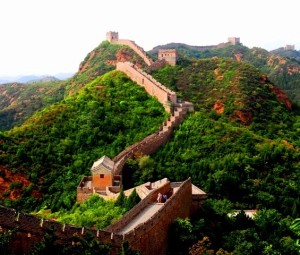

Towers offer great respite from the mid day heat, though most of the times they are roofless, as the original wooden roofs have disintegrated centuries ago. Camping is usually done under towers or in the fields next to the wall.
Hiking Areas:
North of Beijing is the most easily accessible area for hiking on the Great Wall. The trek can commence from there, going either Eastward or West wards. Jinshanling and Simatai are some of the best places to hike up for a Day long or 4 days tours. 
These are wilder sections free of tourist kitsch and vendors. For longer duration hiking,
Herbie province can be considered where Ming era sections can be found. For the ones with larger appetite for adventure, Huanghuacheng and Mutianyu offer rugged walls in rough terrain. Though getting there and mounting the wall in it is a challenge, with thick bushes and no stony trail or path leading up to the wall. The further away you go from Beijing, the infrastructure and accessibility is dismal. Nonetheless it is possible to hike the entire Great Wall of China.
My experience of Hiking on the Great wall:
For me, the Great Wall was way more enormous than I could ever imagine! I with my small group of backpackers, hiked between Jinshanling to Simatai in an overnight tour. It was an exhilarating experience.
We took a path through thick bushes to mount the wall. The trail on the wall was made of loose stones and gravel and was slippery in most parts. Once you decide to hike up the wall, there is no respite. Unlike a trail, there are nonstop curves, steep climbs and sharp peaks.
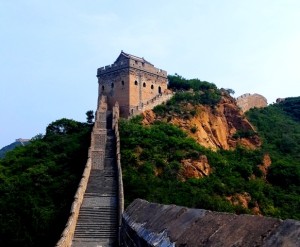 Some sections of side walls were leaning outwardly in such a bizarre way that it is impossible to hang on them for comfort. In these areas, we tried to balance in the center of the wall and walk sideways so not to get pulled down by the gravity. There are even stretches where there are no side walls, where smaller concrete bumps are created to avoid slipping off. We tip toed or crawled on our palms to balance there.
Some sections of side walls were leaning outwardly in such a bizarre way that it is impossible to hang on them for comfort. In these areas, we tried to balance in the center of the wall and walk sideways so not to get pulled down by the gravity. There are even stretches where there are no side walls, where smaller concrete bumps are created to avoid slipping off. We tip toed or crawled on our palms to balance there.
We camped by the side of the wall. I still cannot forget waking up early in the morning, with first rays of the Sun illuminating watch towers; which looked like jeweled hilltops on a linear ridge. The serpentine wall stretched infinitely into the horizon revealing its greatness and the grandeur!
The stretch of wall at Jinshanling is a visual delight, which is partly restored and mostly rugged. This section is known for breathtaking scenery, offering great photography opportunities. Though I still wonder why the wall was built. For protection of course! But then hills were not enough? It seems mankind’s feat was more assuring (protecting) than Nature’s boundaries!!!
Live from The Great Wall Camping:
Tips:
- Hiking on the Great Wall should be planned in cooler weather; autumn is the best, with lower temperature and amazing fall vistas on tops of the mountains.
- Right shoes, hat, light back pack and weather proof gear is a must. Carry the essentials from your home country.
- Be careful of storms and lightening. Walking high up on the ridgeline all the time, you are completely exposed to the elements.
- Equip well on snacks, energy bars and medicines for the number of days of travel. There can be days without any human sighting in remote areas, outside Beijing province.
- Read more about Fun Things to do in Beijing.
Hiking on the Great Wall is strenuous and challenging, but going beyond the usual brings with it the awe inspiring beauty and a great sense of achievement!
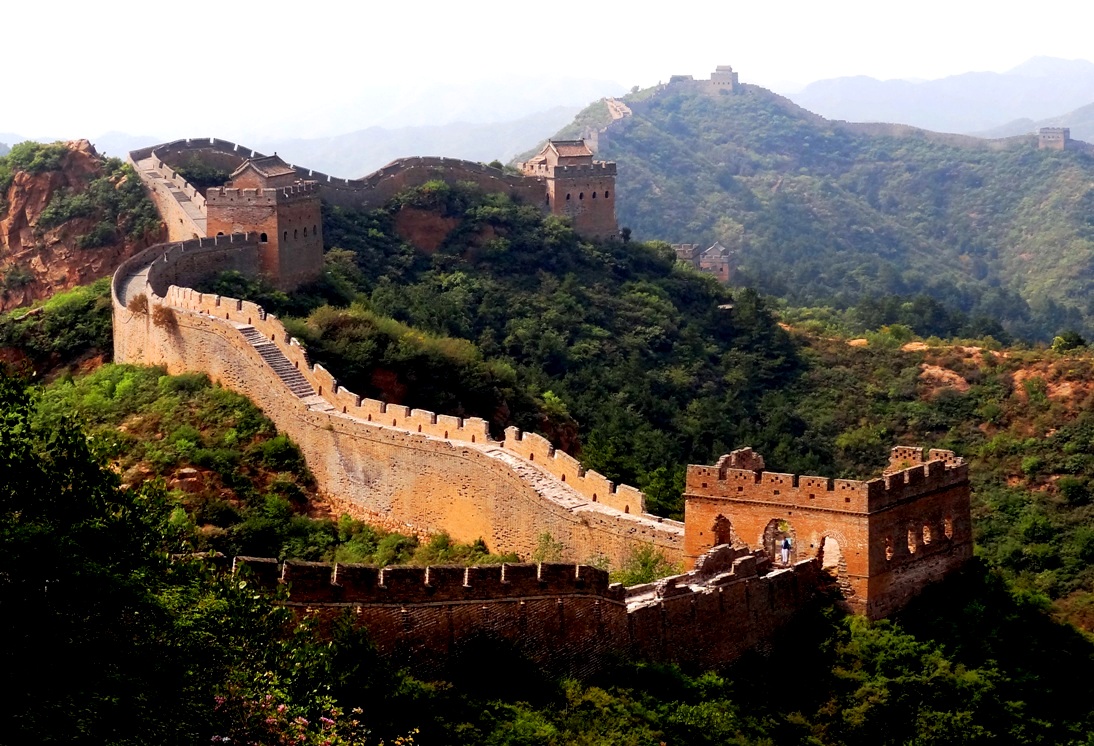
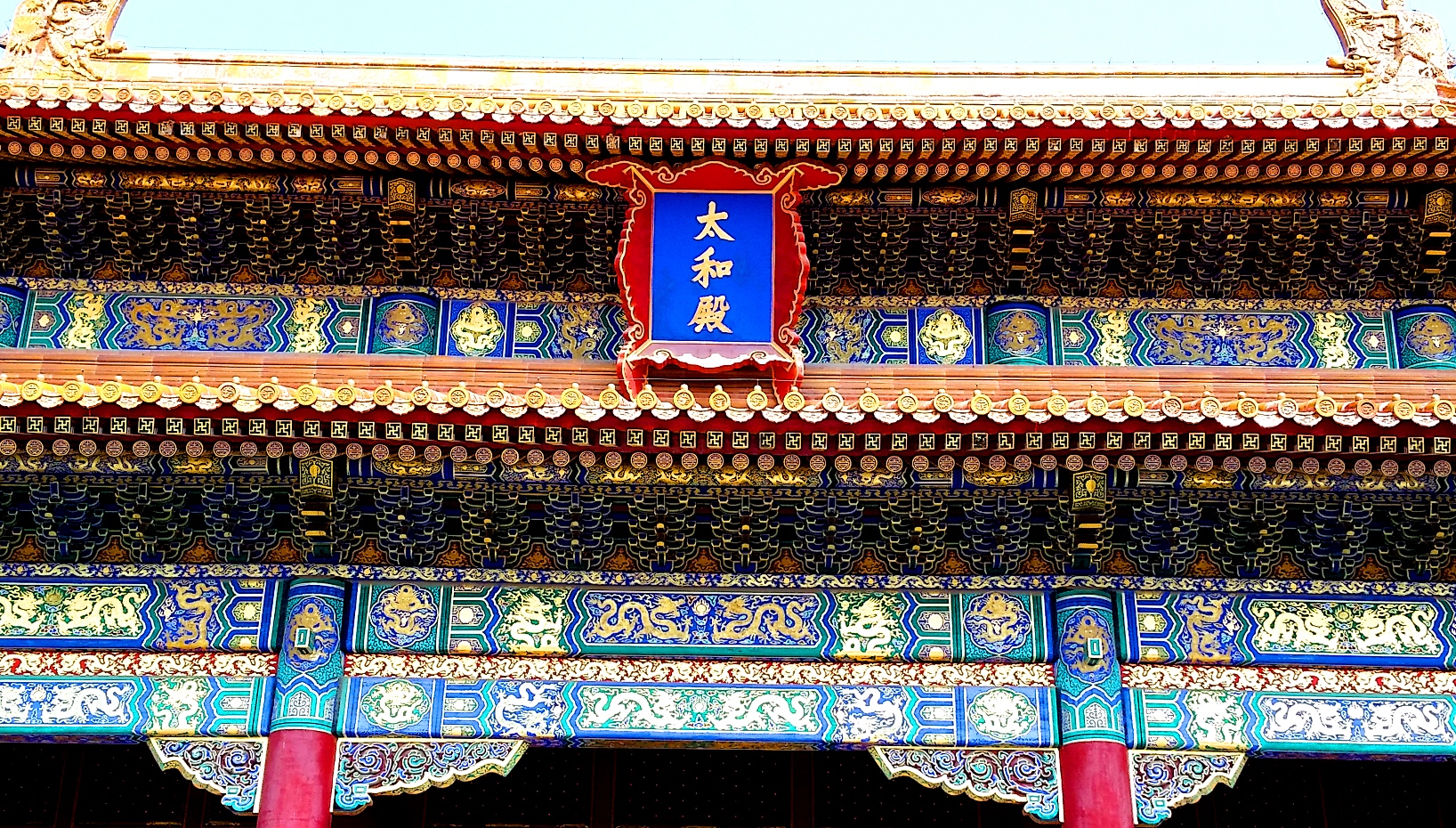
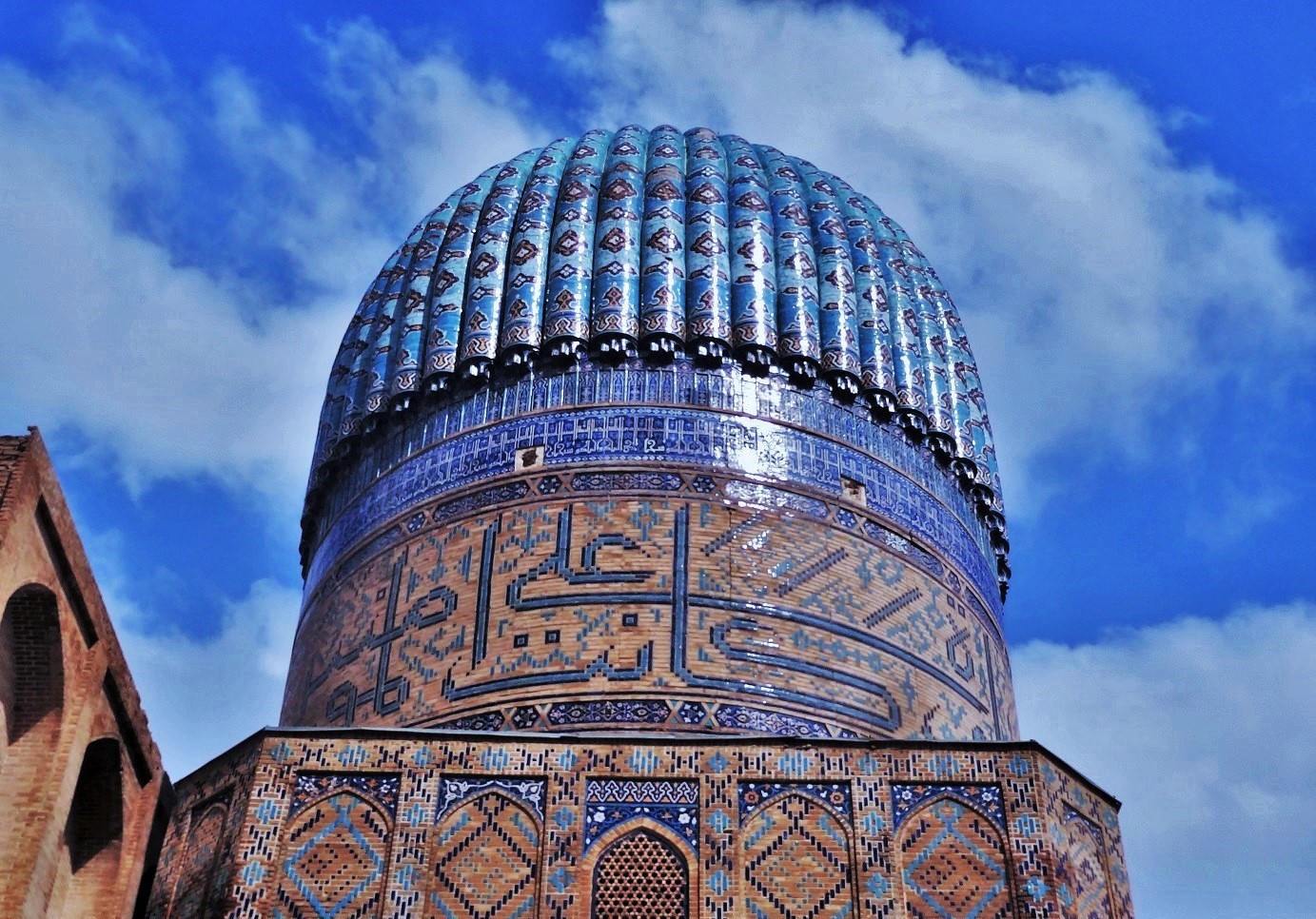
Pingback: Things to do in Beijing | I love tripping! Travel Blog
Great post. Great Wall is part of my bucket list and your post gives a very clear insight into what to expect and where to lay siege 🙂